NOTE: Check the latest blog post for an update on the below information!
I recently acquired a shiny new Yaesu FT-450D. I knew almost immediately that I wanted to use one of my many RTL-SDR dongles to set up a pandapter. As luck would have it, all the hard work was done for me by Dave Powis, G4HUP. He had designed a compact, high-impedance IF tap for direct connection to any SDR. Unfortunately, with the passing of Dave came the end to all shipments of the PAT board, leaving me high and dry in the search for a cheap way to add a panadapter.
Luckily, Dave was kind enough to leave a PDF on his website detailing the construction and design of the PAT board. It’s a very simple circuit overall, consisting of a common drain JFET amplifier followed by a common-collector NPN amplifier. The common drain amp, or source follower as it’s also known, provides a high input impedance to prevent loading of the first IF, while the common-collector amp provides a low output impedance to sufficiently drive the 50Ω load of the SDR. With only one semester of analog amplifier design behind me, I wasn’t going to try to reinvent the wheel. This circuit was proven to work and was a very simple and easy to implement solution.
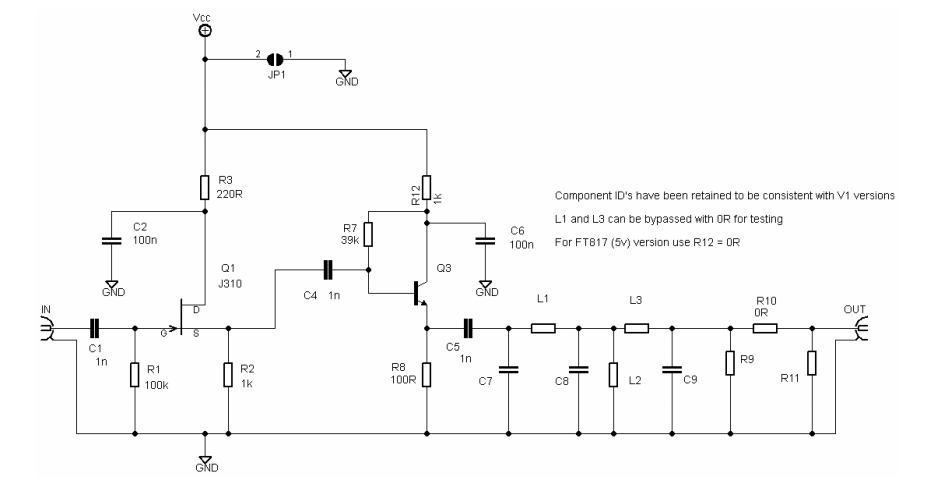
Disclaimer: I am by no means qualified as anything more than a google-informed RF engineer, so take all my work with a grain of salt
I updated the design in EagleCad with minimal modification. All resistor values were kept the same, and the transistor part numbers were matched as best I could with the minimal information I could find. The JFET was labeled as a J310, and an MMBFJ310LT3G from ON Semi seemed to be the right fit. BJT wise, the case code was E1W, and the closest tranny I could find with similar markings was a BFS17NTA from Diodes, Inc. Close enough for what we’re doing, anyway.
The major modification was the substitution of the original lowpass filter with a 5-pole Chebyshev LPF with a cutoff at 75MHz. The FT-450D’s first IF runs at 70MHz, so this should clean up any harmonics or noise that would otherwise clog up the SDR receiver. This is really the only frequency-dependant part of the circuit, and if you want to change the design to fit your radio’s IF you can use the awesome calculator by the University of York to get the correct component values.
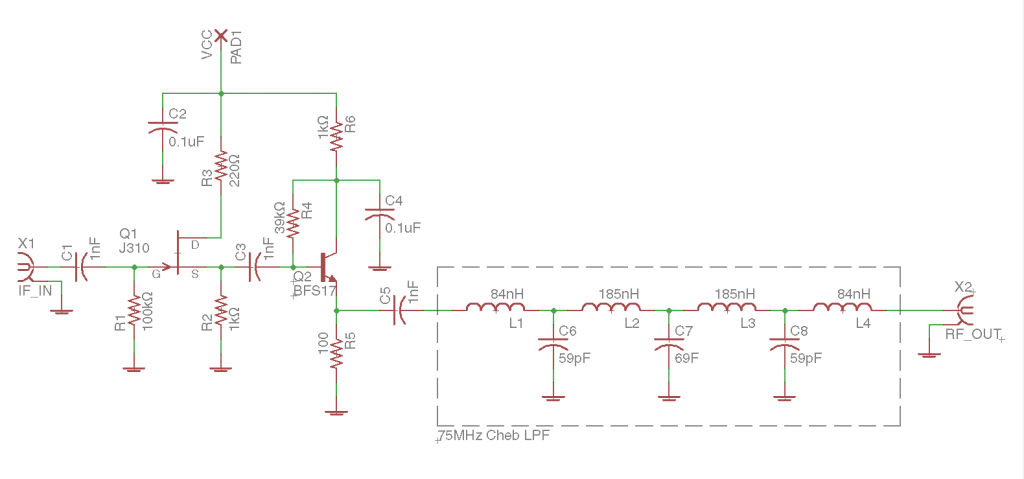
The board is fairly simple in construction. The components are all 1206 size, which are very easy to solder. The overall board dimensions are 1.85 x 0.65 in, small enough to cram inside a radio. While the board design calls for SMA connectors, ideally you’d solder silver-plated coax such as RG316 directly to the board, as per Dave’s installation notes. I’ve christened this new board design the W3AXL PanaTap.
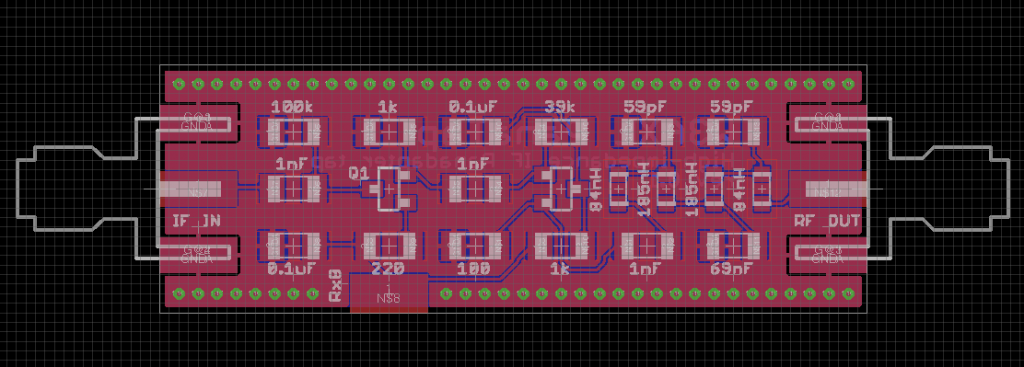
The board files have been sent off to OSHPark for fabrication, and the components have been ordered from Mouser. Everything should be here after the holiday, and hopefully I’ll be able to report back with success in my design updates. Unfortunately, even though my SPICE simulations seem to check out, RF designs of mine are notorious for not working as intended without a decent amount of tweaking.
I’ve uploaded the Eagle files to my Github (why yes, I did create a github just for this project!) for your viewing pleasure. Feel free to rip to shreds my design choices and style; I never claimed to know what I was doing.
Here’s hoping I can get a panadapter hooked up with minimal issues. Check back soon for an update!

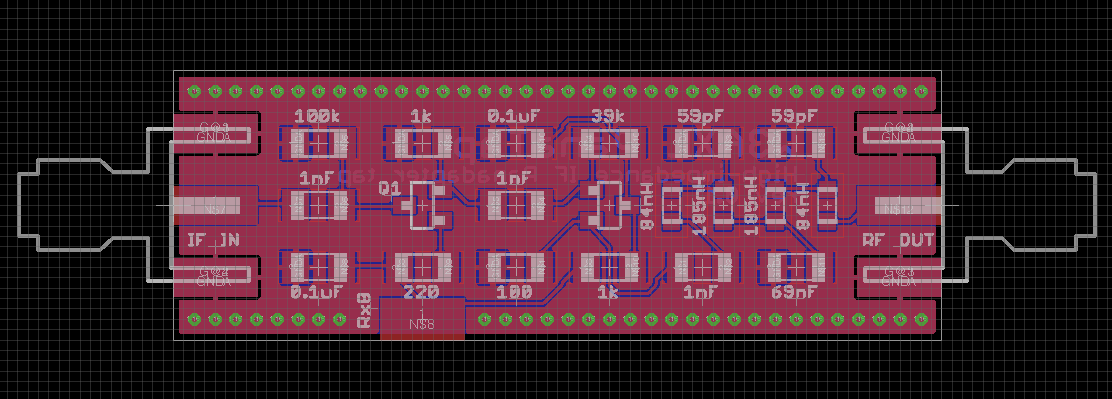
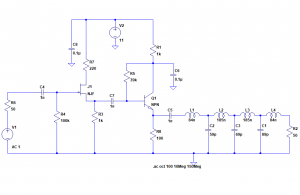
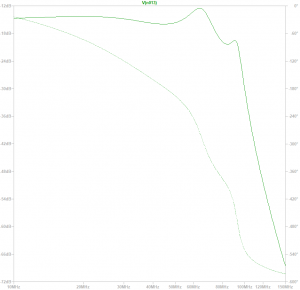
Hello, I am interested to install it in my ft450d. Possible to have one ?
73
HI W3axl:
Just curious how this worked out for you. I’ve been putting off ordering the board from G4HUP and then noticed his silent key.
Your work now looks like a great option.
73s
AD0RR
This looks like an awesome project! I would love to see more of it, perhaps at the shack sometime once you build it…I was wondering if you had to get your traces just right to avoid the capacitance that could be added to the input. I know RF Engies are keen to that sort of problem. Very cool…. 73! de Nick N9SJA
Nice site BTW….had some downtime at work and decided to check out your website 😉
do you know anyone who has installed into an FT-890 ?
cant find any indication of someone who did on the PAT site.
where did they tap off for both the IF and switched Vcc?